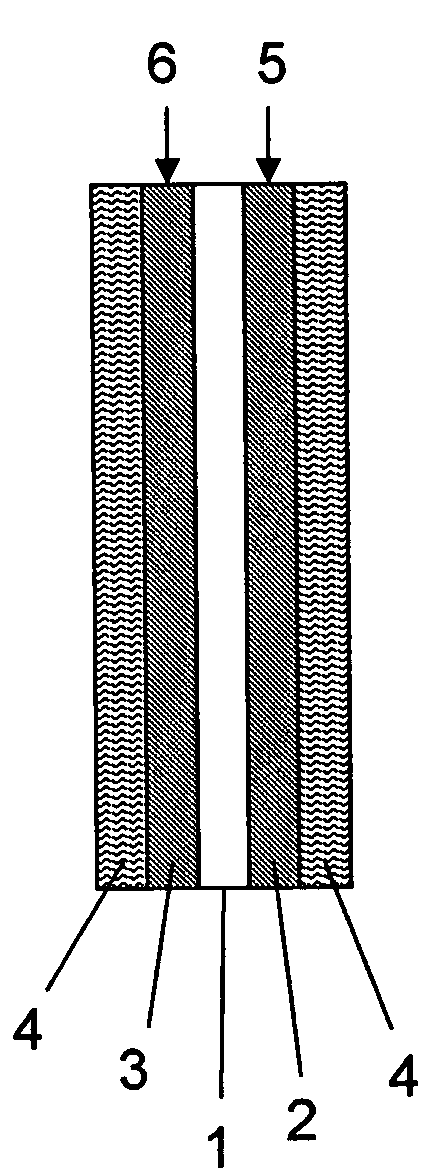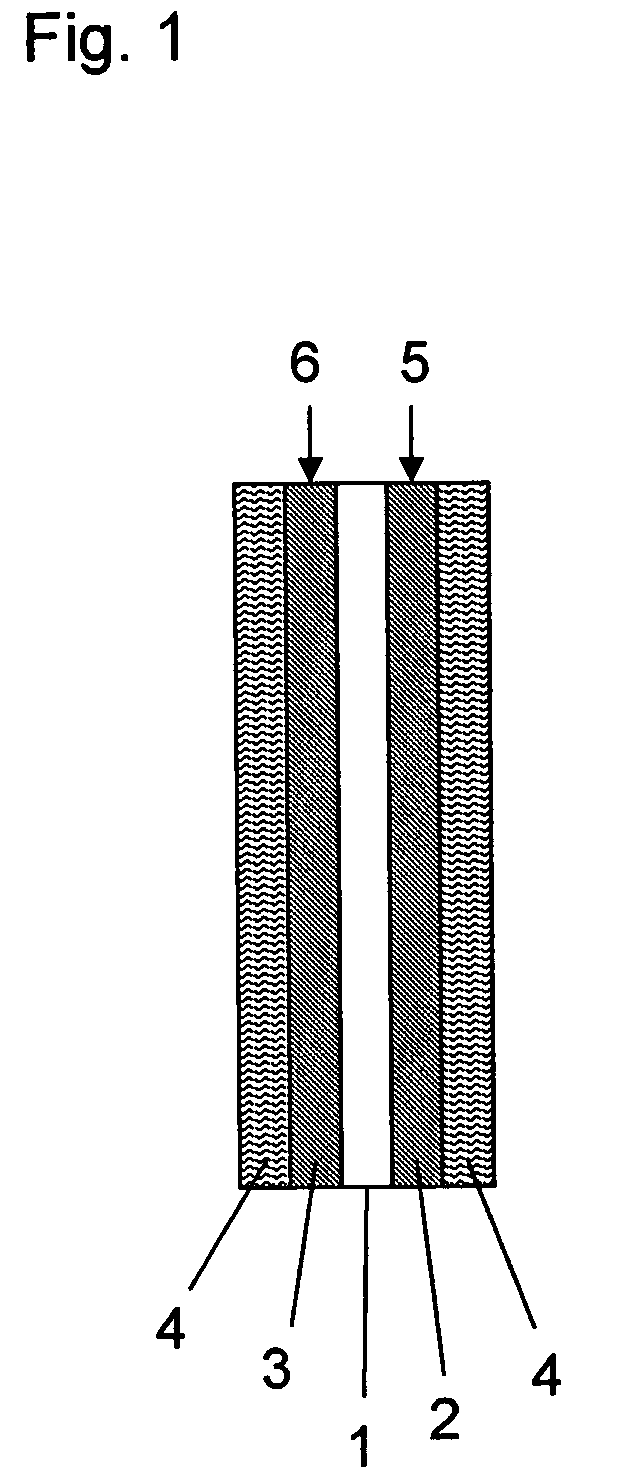Aromatic polymer, film, electrolyte membrane and separator
a technology of electrolyte membrane and separator, applied in the direction of sustainable manufacturing/processing, final product manufacturing, electrochemical generators, etc., can solve the problems of affecting superior mechanical characteristics, structural units, significant process limitations, etc., and achieve high young's modulus, low moisture absorption, and great elongation at break
- Summary
- Abstract
- Description
- Claims
- Application Information
AI Technical Summary
Benefits of technology
Problems solved by technology
Method used
Image
Examples
example 1
[0131]A 200-ml, four-necked flask equipped with a stirrer was charged with 3.6638 g of 2,6-naphthalene dicarbohydrazide, 4.3850 g of 1,3-bis-(4-aminophenoxy)benzene, 149.67 ml of N-methyl-2-pyrrolidone and 5.98 g of lithium bromide, followed by stirring under nitrogen under ice cooling. During a period from 10 to 30 minutes later, 6.091 g of terephthaloyl dichloride was added in five portions. After stirring for additional one hour, hydrogen chloride produced during the reaction was neutralized with 2.139 g of lithium carbonate to yield a transparent polymer solution. Even after being left to stand for two weeks, the polymer solution was transparent and maintained its fluidity.
[0132]A portion of the resulting polymer solution was taken on a glass plate and then a uniform film was formed therefrom with a bar coater. The film was heated at 120° C. for seven minutes to yield a self-supporting film. The resulting film was removed from the glass plate and was fixed in a metal frame. It w...
example 2
[0133]A 200-ml, four-necked flask equipped with a stirrer was charged with 1.4655 g of 2,6-naphthalene dicarbohydrazide, 4.0926 g of 1,3-bis-(4-aminophenoxy)benzene, 68.31 ml of N-methyl-2-pyrrolidone and 4.08 g of lithium bromide, followed by stirring under nitrogen under ice cooling. During a period from 10 to 30 minutes later, 4.0604 g of terephthaloyl dichloride was added in five portions. After stirring for additional one hour, hydrogen chloride produced during the reaction was neutralized with 1.426 g of lithium carbonate to yield a transparent polymer solution. Even after being left to stand for two weeks, the polymer solution was transparent and maintained its fluidity.
[0134]A portion of the resulting polymer solution was taken on a glass plate and then a uniform film was formed therefrom with a bar coater. The film was heated at 120° C. for seven minutes to yield a self-supporting film. The resulting film was removed from the glass plate and was fixed in a metal frame. It w...
example 3
[0135]A 200-ml, four-necked flask equipped with a stirrer was charged with 2.931 g of 2,6-naphthalene dicarbohydrazide, 1.2977 g of paraphenylenediamine, 1.2014 g of 4,4′-diaminodiphenyl ether, 115.89 ml of N-methyl-2-pyrrolidone and 4.67 g of lithium bromide, followed by stirring under nitrogen under ice cooling. During a period from 10 to 30 minutes later, 6.0906 g of terephthaloyl dichloride was added in five portions. After stirring for additional one hour, hydrogen chloride produced during the reaction was neutralized with 2.1391 g of lithium carbonate to yield a transparent polymer solution. Even after being left to stand for two weeks, the polymer solution was transparent and maintained its fluidity.
[0136]A portion of the resulting polymer solution was taken on a glass plate and then a uniform film was formed therefrom with a bar coater. The film was heated at 120° C. for seven minutes to yield a self-supporting film. The resulting film was removed from the glass plate and wa...
PUM
| Property | Measurement | Unit |
|---|---|---|
| elongation at break | aaaaa | aaaaa |
| elongation at break | aaaaa | aaaaa |
| temperatures | aaaaa | aaaaa |
Abstract
Description
Claims
Application Information
 Login to View More
Login to View More - R&D
- Intellectual Property
- Life Sciences
- Materials
- Tech Scout
- Unparalleled Data Quality
- Higher Quality Content
- 60% Fewer Hallucinations
Browse by: Latest US Patents, China's latest patents, Technical Efficacy Thesaurus, Application Domain, Technology Topic, Popular Technical Reports.
© 2025 PatSnap. All rights reserved.Legal|Privacy policy|Modern Slavery Act Transparency Statement|Sitemap|About US| Contact US: help@patsnap.com



